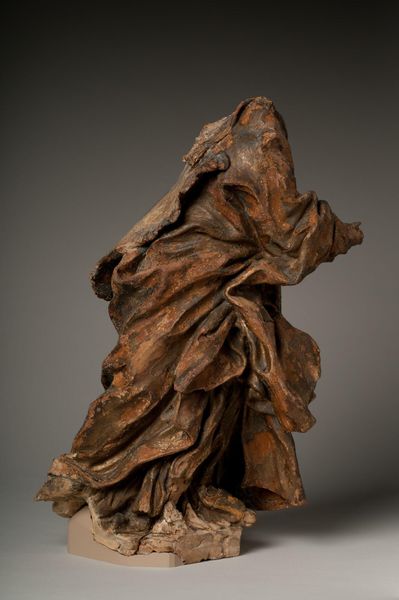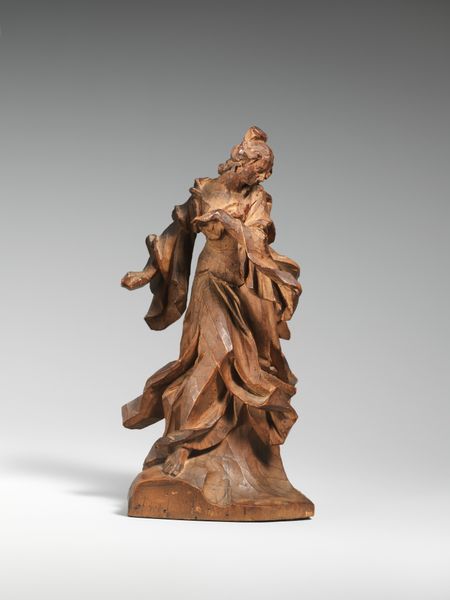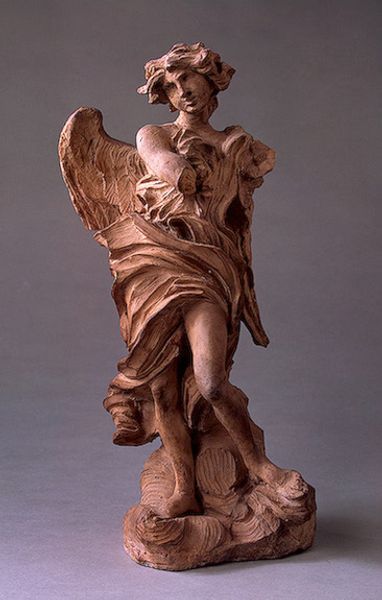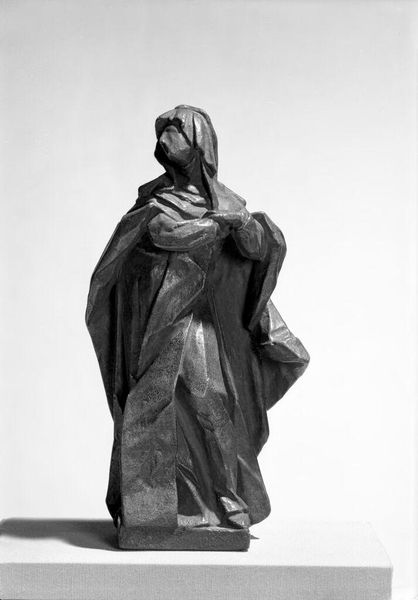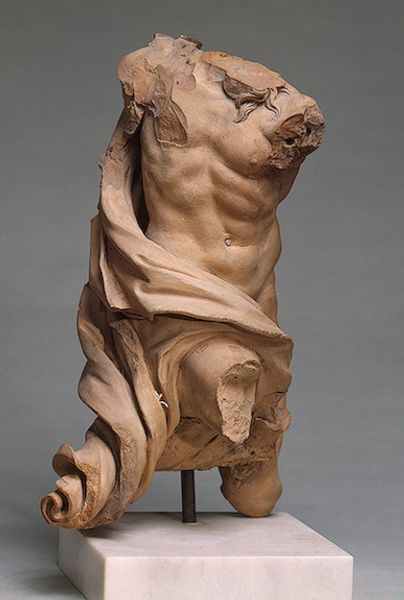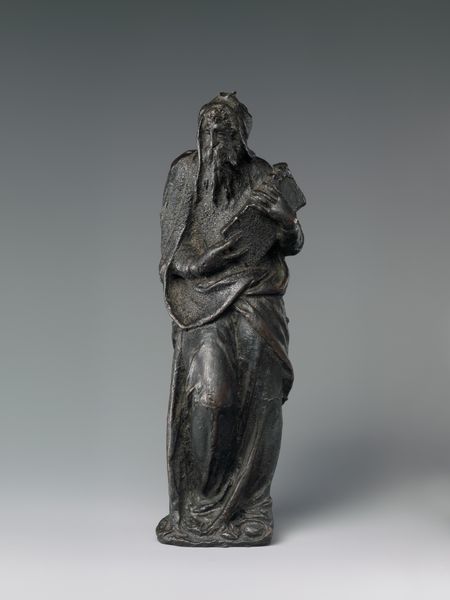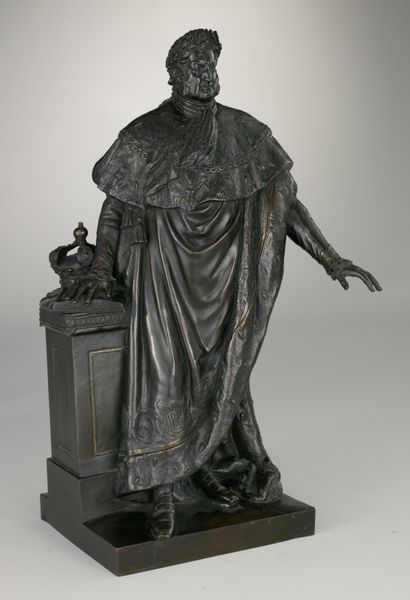
carving, bronze, sculpture
#
portrait
#
statue
#
medieval
#
carving
#
baroque
#
bronze
#
sculpture
#
christianity
#
history-painting
#
statue
Copyright: Public domain
Curator: This Baroque sculpture, “St. Augustine,” was completed by Gian Lorenzo Bernini around 1650 and is currently held at the Hermitage Museum in St. Petersburg. Editor: The sheer dynamism of it strikes me immediately. Look at how the drapery seems to swirl around him, capturing movement even in this fixed form. It gives the impression of spiritual awakening or sudden realization. Curator: Precisely. Bernini masterfully captures the saint's intense contemplation through this sense of implied motion. Augustine, a pivotal figure whose writings greatly impacted the development of Western philosophy and Christian theology. What sociopolitical implications may be explored using his character's life story as the lens? Editor: Beyond Augustine's status as a theologian, the work speaks to the incredible labor involved. Just consider the skill and effort required to manipulate bronze into such complex shapes and textures. There is a sense of both precision and flow within its making. Curator: That fluidity is typical of Baroque sculpture, of course, but here, it serves a distinct purpose. It accentuates Augustine’s internal struggle, which then contextualizes a religious fervor which affected not just societal spiritual inclinations but also the shaping of ethics, laws, and policies. His transformation had considerable repercussions. Editor: It raises the question about materiality in Baroque art; was this era actually trying to show their raw power through works like this? In using bronze and creating this level of detail, the artist flaunts not only skill but available resources, the system that funds such extensive undertakings, and, by extension, its impact on the general public at the time. Curator: I think your materialist approach gives insight into this period's underpinnings. But if we examine gender studies alongside religious expression, what conclusions might be made from gender roles when evaluating Augustine as a leader figure? The sculpture presents more layers than previously acknowledged. Editor: It’s about recognizing labor as more than a backdrop; the means of production directly influence how the message is both formed and understood by society. Looking closely allows us to consider labor conditions that underpin not just aesthetic representation but the culture industry in which it flourishes or does not flourish. Curator: I will consider that more carefully now as I think about cultural productions such as this and where it is going in today’s global art landscape. Editor: Yes, all elements –labor, material, context – intersect to mold our comprehension.
Comments
No comments
Be the first to comment and join the conversation on the ultimate creative platform.
